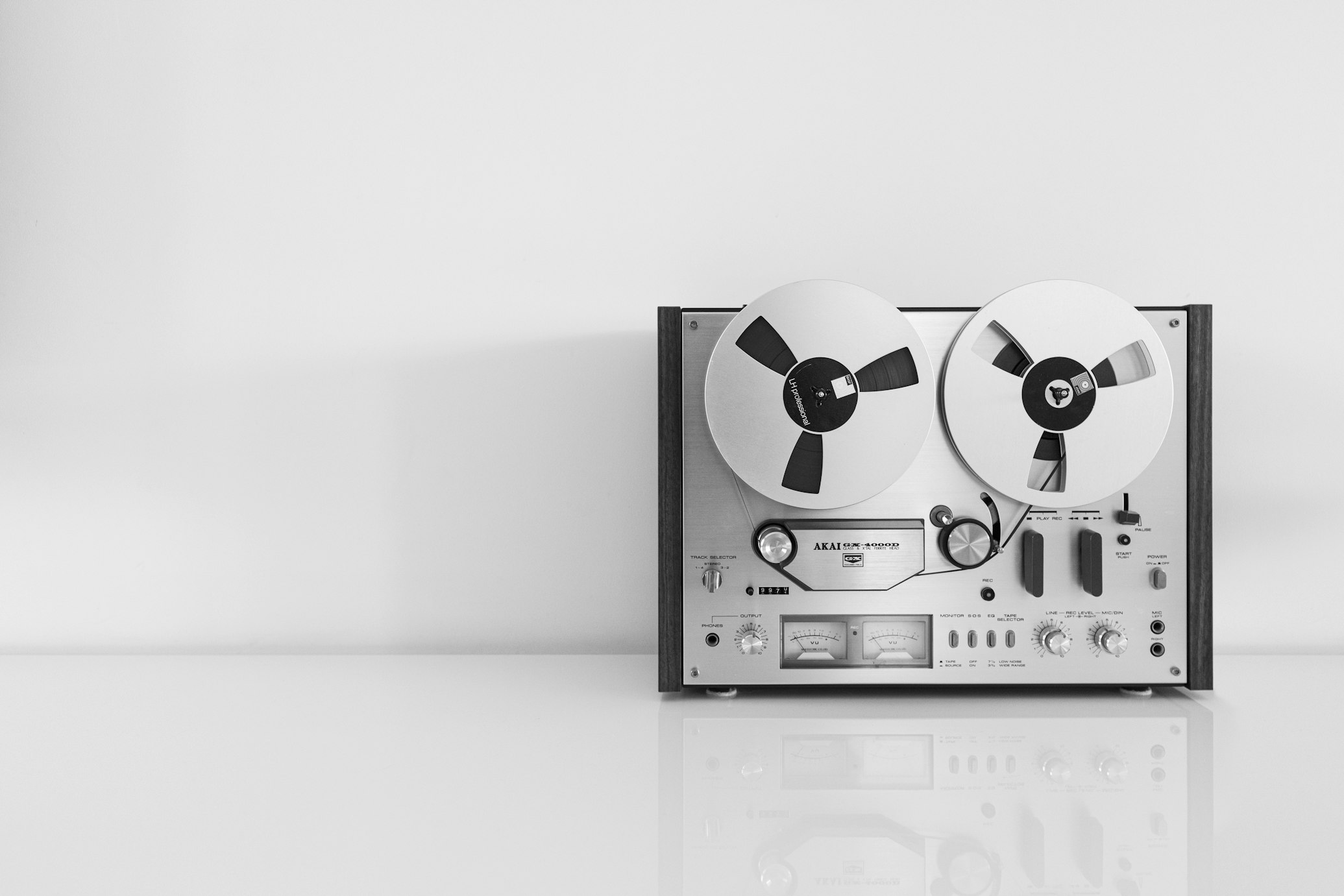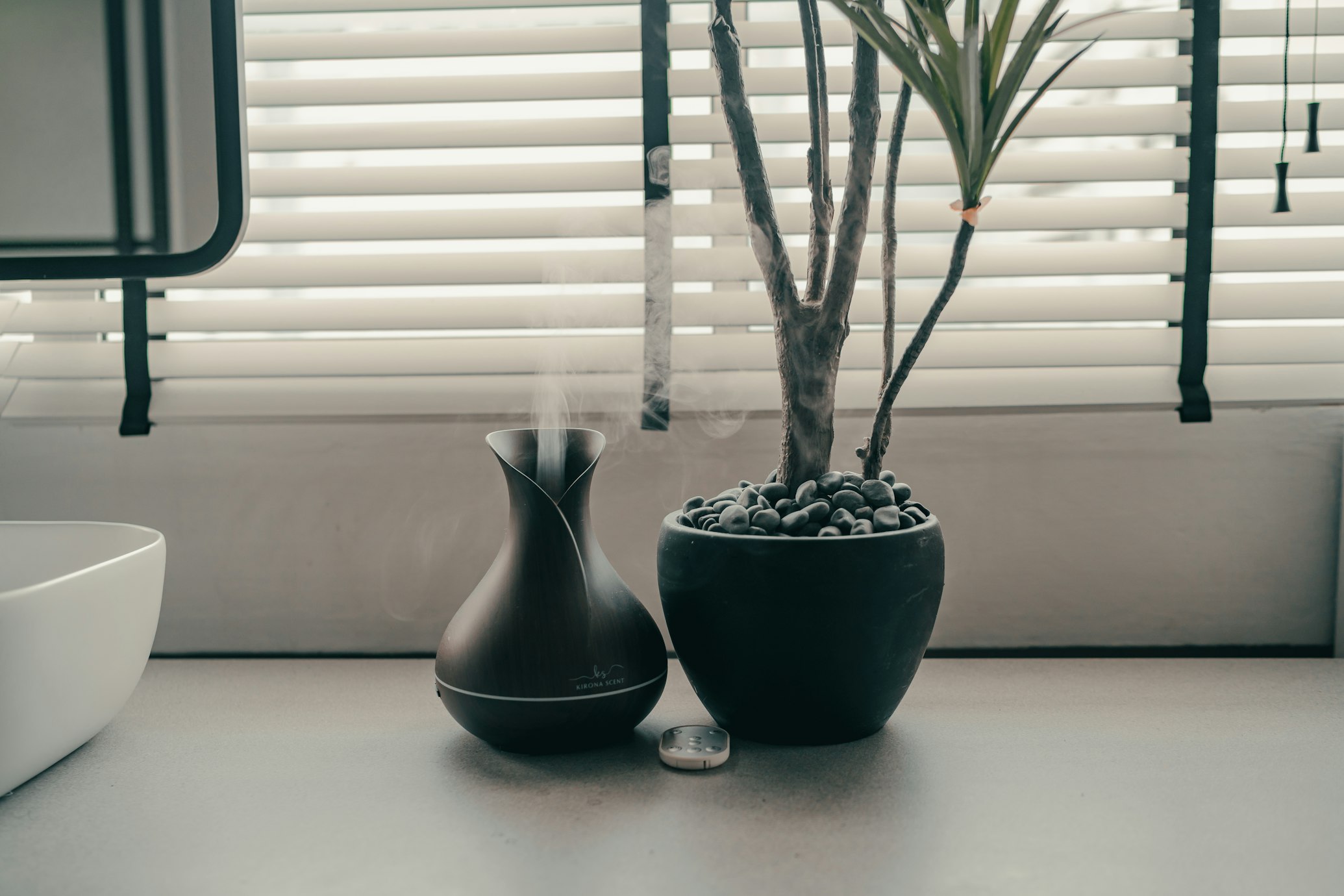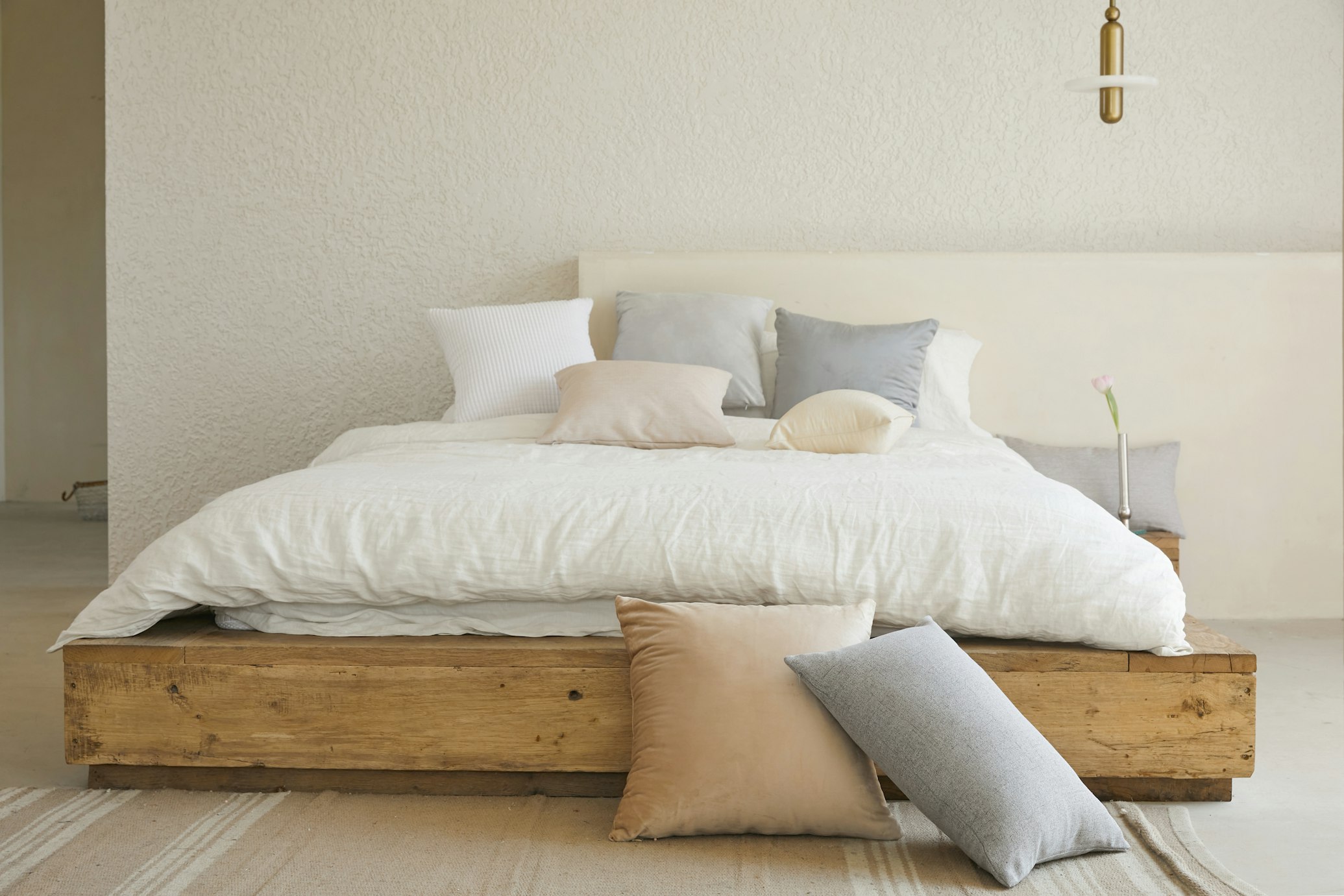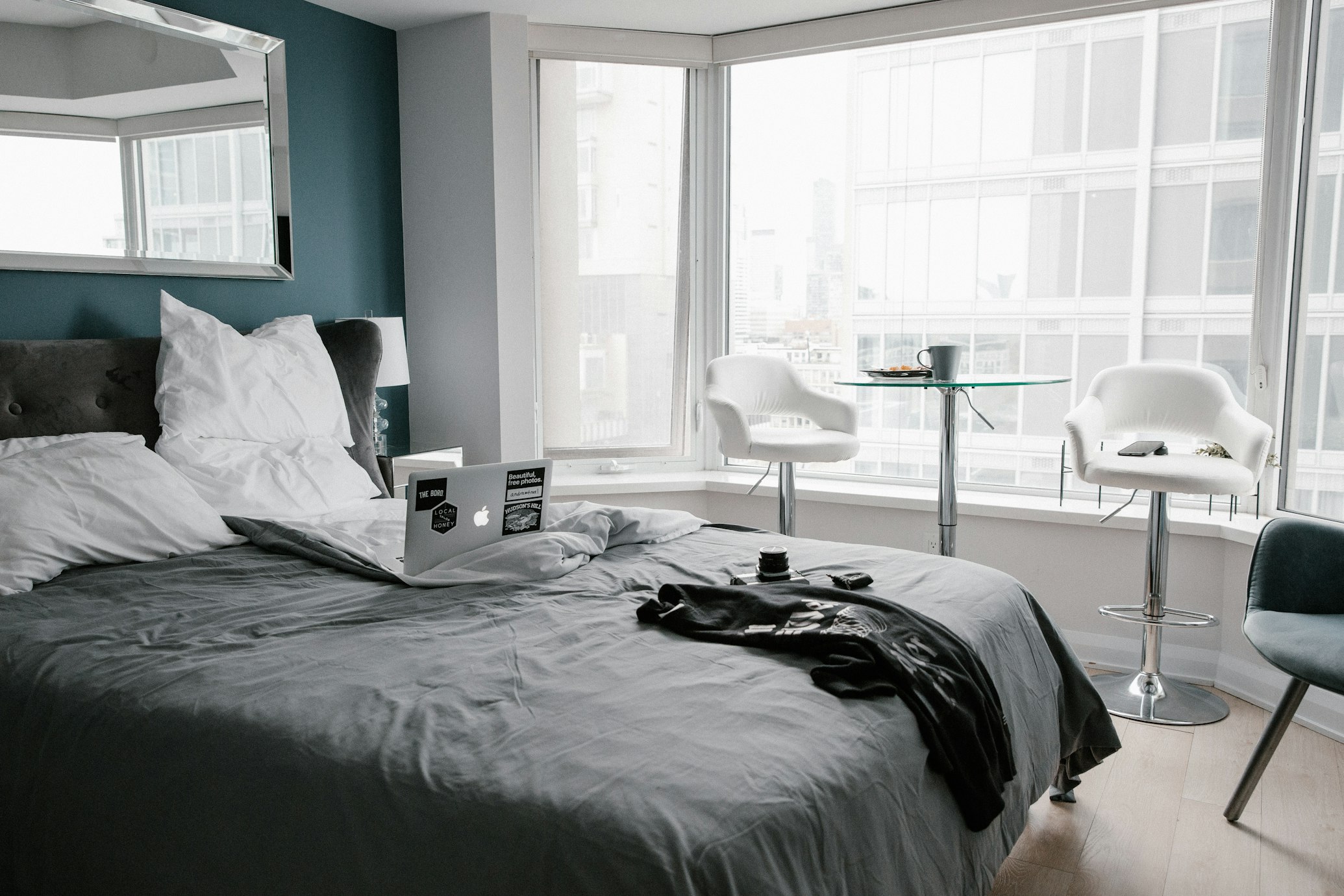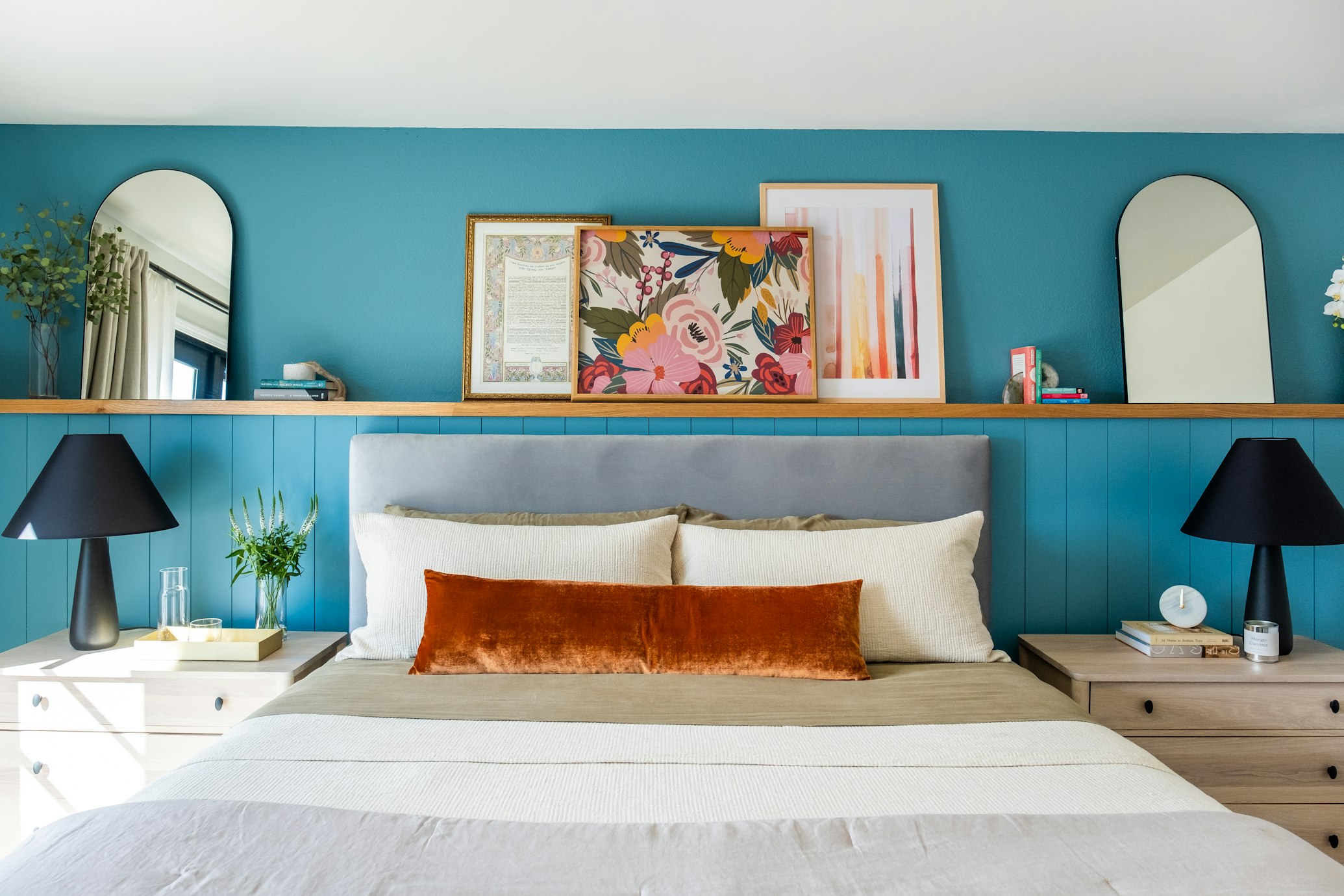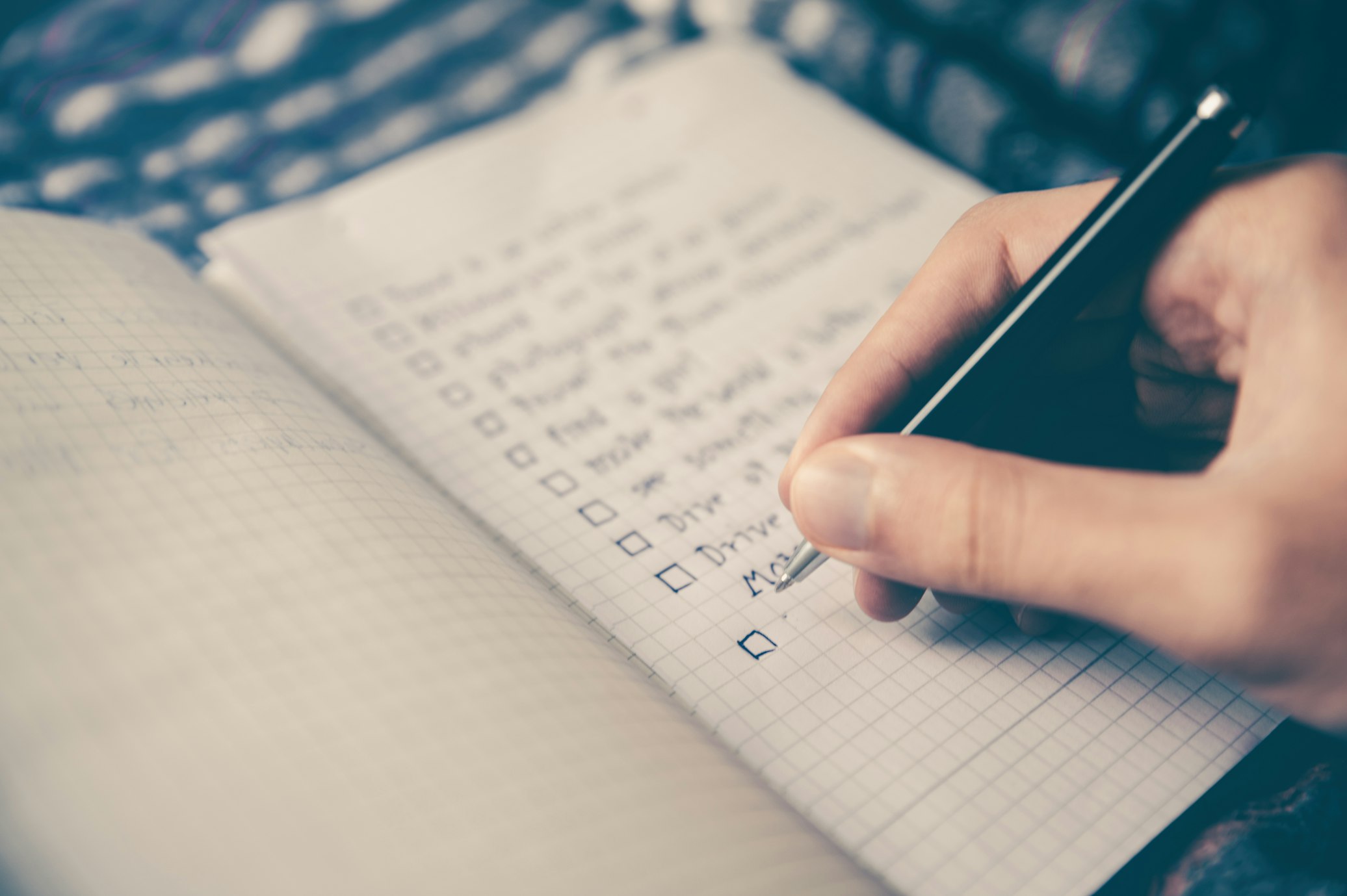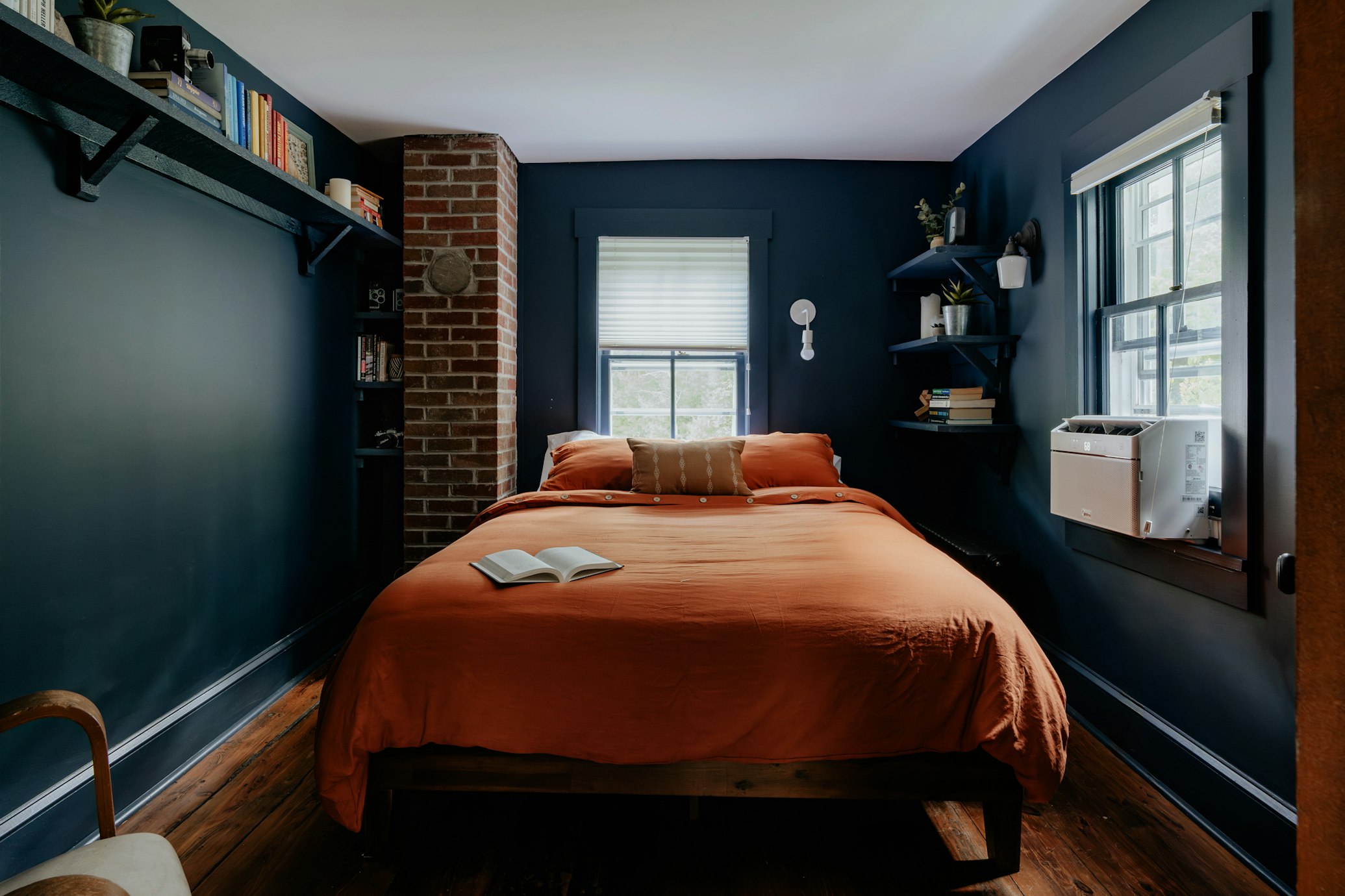How to Create the Perfect Bedroom for Better Sleep: Complete Setup Guide

Your bedroom environment plays a crucial role in sleep quality. Research shows that optimizing your sleep environment can improve sleep onset by 37% and overall sleep quality by 25%. Here’s how to transform your bedroom into the ultimate sleep sanctuary.
The Science of Sleep Environment
Your brain uses environmental cues to regulate your circadian rhythm and prepare for sleep. The ideal bedroom should signal to your body that it’s time to rest by optimizing:
- Temperature regulation
- Light exposure
- Sound levels
- Air quality
- Comfort factors
Let’s optimize each element for better sleep.
Temperature: The Cool Zone (65-68°F)
Temperature is one of the most critical factors for quality sleep. Your core body temperature naturally drops 1-2 degrees as you prepare for sleep.
The Ideal Sleep Temperature: 65-68°F (18-20°C)
Why cooler is better:
- Supports natural temperature drop
- Prevents night sweats and overheating
- Helps maintain deep sleep phases
- Reduces tossing and turning
How to Achieve Optimal Temperature:
Thermostat Settings:
- Set to 65-68°F in evening
- Use programmable thermostat for automatic adjustment
- Cool bedroom 1-2 hours before bedtime
Bedding Choices:
- Breathable sheets: Cotton, linen, or bamboo
- Lightweight comforter: Down alternative or lightweight down
- Moisture-wicking sleepwear: Avoid heavy pajamas
Cooling Solutions:
- Fan circulation: Ceiling or bedside fan
- Cooling mattress topper: Gel-infused or copper-infused
- Chilipap or cooling pad: For hot sleepers
- Breathable pillow: Latex or shredded foam
Temperature Troubleshooting:
Too Hot:
- Remove layers gradually
- Take cool shower before bed
- Use cooling sheets and pillows
- Improve room ventilation
Too Cold:
- Layer blankets for easy adjustment
- Warm feet with socks (remove if you get too warm)
- Use heated mattress pad on low setting
Lighting: Embrace the Darkness
Light is the primary cue for your circadian rhythm. Even small amounts of light can disrupt melatonin production.
Creating Complete Darkness:
Blackout Solutions:
- Blackout curtains: Block 99% of external light
- Light-blocking shades: Cellular or roller shades
- Eye mask: High-quality, comfortable fit
- Door gap covers: Block hallway light
Electronic Light Sources:
- Cover or remove LED clocks
- Use blackout tape on device lights
- Charge phones outside the bedroom
- Install blackout outlet covers
Evening Light Management:
2-3 Hours Before Bed:
- Dim all lights to 50% brightness
- Use warm-toned bulbs (2700K or lower)
- Avoid bright overhead lighting
1 Hour Before Bed:
- Use only dim, warm lighting
- Try salt lamps or candles
- Wear blue-light blocking glasses if using devices
Bedroom Lighting Setup:
- Dimmer switches: Control brightness levels
- Warm LED bulbs: 2700K for evening use
- Red night light: For bathroom trips
- Sunrise alarm clock: Gradual morning wake-up
Sound: The Quiet Sanctuary
Noise can fragment sleep even if it doesn’t fully wake you. Aim for a consistently quiet environment.
Optimal Sound Levels:
- Target: Under 30 decibels (quiet library level)
- Maximum: 40 decibels before sleep disruption occurs
Noise Control Strategies:
Sound Blocking:
- Heavy curtains: Reduce outside noise
- Weatherstripping: Seal gaps around doors/windows
- Carpet or rugs: Absorb sound
- White noise machine: Masks inconsistent sounds
Earplugs Guide:
- Foam earplugs: Best noise reduction (32-33 NRR)
- Silicone earplugs: More comfortable for side sleepers
- Custom molded: Most comfortable long-term option
White Noise Options:
- Fan: Natural, consistent sound
- White noise machine: Consistent masking
- Apps: Rain, ocean, or brown noise
- Air purifier: Dual function - clean air and white noise
Dealing with Specific Noises:
Partner snoring: White noise machine + earplugs Street noise: Heavy curtains + weather sealing Neighbors: Carpeting + sound machine HVAC noise: Regular maintenance, sound dampening
Air Quality: Breathe Easy
Poor air quality can cause congestion, allergies, and restless sleep.
Optimizing Bedroom Air:
Humidity Control:
- Ideal range: 30-50% humidity
- Too dry: Use humidifier, especially in winter
- Too humid: Use dehumidifier, improve ventilation
Air Purification:
- HEPA air purifier: Removes allergens and particles
- Plants: Snake plant, aloe vera (release oxygen at night)
- Regular cleaning: Dust weekly, vacuum frequently
Ventilation:
- Fresh air circulation: Open windows when weather permits
- Ceiling fan: Improves air movement
- Avoid: Air fresheners and strong scents
Allergen Control:
- Hypoallergenic bedding: Dust mite resistant
- Pillow protectors: Washable barriers
- Regular washing: Sheets weekly, pillows monthly
- Pet management: Keep pets out if allergic
Comfort Elements: The Perfect Sleep Surface
Your mattress, pillows, and bedding directly impact comfort and support.
Mattress Optimization:
Firmness Guide:
- Side sleepers: Medium to medium-soft (4-6/10)
- Back sleepers: Medium (5-7/10)
- Stomach sleepers: Medium-firm to firm (6-8/10)
When to Replace:
- Age: Over 7-8 years old
- Sagging: Visible indentations
- Pain: Waking with aches
- Poor sleep: Tossing and turning
Pillow Setup by Sleep Position:
Side Sleepers:
- Thick, firm head pillow (4-6 inches)
- Pillow between knees
- Body pillow for arm support
Back Sleepers:
- Medium thickness head pillow (3-5 inches)
- Small pillow under knees
- Optional lumbar support
Stomach Sleepers (not recommended):
- Thin or no head pillow
- Pillow under pelvis
Bedding Essentials:
Sheet Materials:
- Cotton percale: Cool and crisp
- Linen: Very breathable
- Bamboo: Moisture-wicking and soft
- Thread count: 200-400 (higher isn’t always better)
Blanket Options:
- Down comforter: Lightweight warmth
- Down alternative: Hypoallergenic option
- Weighted blanket: May reduce anxiety (15-20 lbs)
Technology and Electronics
Modern bedrooms are filled with sleep-disrupting technology. Here’s how to manage it:
The Electronic Sunset:
1 Hour Before Bed:
- Put phones in airplane mode
- Turn off TVs and computers
- Use only warm, dim lighting
Bedroom Electronics Rules:
- Charge devices outside bedroom
- No TVs in bedroom (if possible)
- Use analog alarm clock
- Keep phones in another room
Sleep-Friendly Technology:
Helpful Devices:
- White noise machine
- Sunrise alarm clock
- Smart thermostat (for temperature control)
- Air purifier with timer
Apps for Better Sleep:
- Sleep tracking: Understand your patterns
- Meditation apps: Calm, Headspace for wind-down
- Blue light filters: f.lux, Night Shift
Organization and Clutter
A cluttered bedroom can create mental stress that interferes with sleep.
Creating a Calming Space:
Decluttering Steps:
- Remove work materials from bedroom
- Clear surfaces - nightstands, dresser tops
- Organize closets - reduce visual chaos
- Minimize decorations - keep it simple
Storage Solutions:
- Under-bed storage for linens
- Nightstand drawers for essentials
- Closet organization reduces morning stress
Bedroom-Only Items:
- Sleep-related items only
- Reading materials
- Essential oils or sleep aids
- Comfortable clothing
Color Psychology for Sleep
Colors can psychologically impact relaxation and sleep quality.
Best Bedroom Colors:
Calming Colors:
- Blue: Most associated with calm and relaxation
- Green: Natural, soothing effect
- Gray: Neutral, peaceful
- Beige/Tan: Warm, comforting
Colors to Avoid:
- Red: Stimulating, increases heart rate
- Bright yellow: Energizing
- Orange: Too stimulating for sleep
- Bright white: Can feel sterile and harsh
Color Implementation:
Wall Colors:
- Soft, muted tones
- Consider accent wall in calming color
- Avoid busy patterns
Bedding Colors:
- Match or complement wall colors
- Choose colors that make you feel relaxed
- Change seasonally if desired
Creating Your Sleep Sanctuary: Room by Room Checklist
Bedroom Essentials Checklist:
Temperature Control: ☐ Thermostat set to 65-68°F
☐ Breathable bedding materials
☐ Fan for air circulation
☐ Appropriate sleepwear
Light Management: ☐ Blackout curtains or shades
☐ Eye mask as backup
☐ Dimmer switches installed
☐ Electronics with lights covered
Sound Control: ☐ White noise machine or fan
☐ Earplugs available
☐ Sound-dampening materials
☐ Quiet environment established
Air Quality: ☐ Humidity at 30-50%
☐ Air purifier running
☐ Regular cleaning schedule
☐ Allergen-proof bedding
Comfort Setup: ☐ Supportive mattress for sleep position
☐ Proper pillows for alignment
☐ Quality, breathable bedding
☐ Comfortable room temperature
Organization: ☐ Clutter removed from bedroom
☐ Work materials relocated
☐ Relaxing decor only
☐ Clean, peaceful environment
Budget-Friendly Sleep Environment Improvements
You don’t need to spend thousands to improve your sleep environment:
Free Improvements:
- Declutter and organize bedroom
- Open windows for fresh air circulation
- Remove electronics from bedroom
- Use thick towels as blackout curtains temporarily
Under $50:
- Eye mask and earplugs ($10-15)
- Blue light blocking glasses ($15-25)
- Essential oils diffuser ($20-30)
- Blackout tape for electronics ($5-10)
Under $100:
- White noise machine ($30-60)
- Humidifier or dehumidifier ($40-80)
- Breathable sheets ($30-70)
- Room-darkening shades ($40-90)
Under $200:
- Blackout curtains ($50-150)
- Air purifier ($80-180)
- Cooling mattress topper ($100-200)
- Memory foam pillow ($50-120)
Seasonal Bedroom Adjustments
Your sleep environment should adapt to changing seasons:
Spring/Summer:
- Lighter bedding (cotton, linen)
- Increased ventilation
- Earlier blackout (longer days)
- Cooling strategies (fans, AC)
Fall/Winter:
- Warmer bedding (flannel, down)
- Humidity control (heating systems dry air)
- Earlier dimming (shorter days)
- Consistent temperature (heating efficiency)
Troubleshooting Common Sleep Environment Problems
”My room is too hot/cold”
- Check thermostat location (away from vents/sunlight)
- Improve insulation around windows
- Use ceiling fan for circulation
- Consider zone heating/cooling
”I can’t block all the light”
- Layer light-blocking solutions
- Try different eye mask styles
- Check for light leaks around curtains
- Use blackout film on windows
”Noise keeps waking me up”
- Combine multiple noise-reduction strategies
- Try different white noise frequencies
- Consider custom earplugs
- Address noise source if possible
”Air feels stuffy”
- Improve ventilation with fans
- Add air-purifying plants
- Check HVAC filter replacement
- Open windows when weather permits
Your Perfect Bedroom Action Plan
- Assess current environment - identify biggest issues
- Start with free changes - declutter, remove electronics
- Address major disruptors - light, noise, temperature
- Invest in quality basics - pillows, sheets, blackout solutions
- Fine-tune over time - track sleep quality improvements
Remember: The perfect bedroom is one that works for YOUR specific needs and preferences. Start with the basics and gradually refine your sleep sanctuary.
Sweet dreams in your optimized bedroom!
